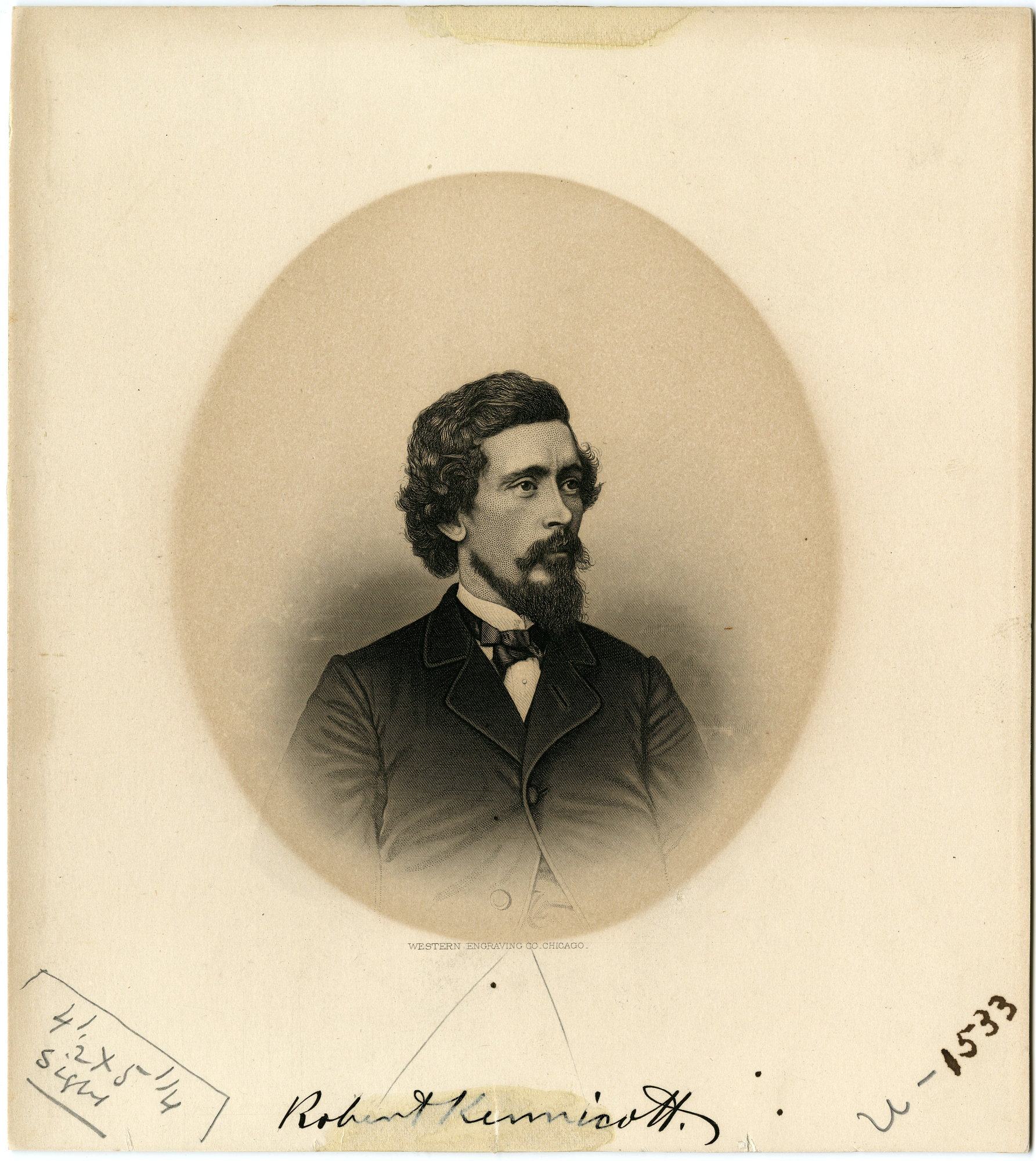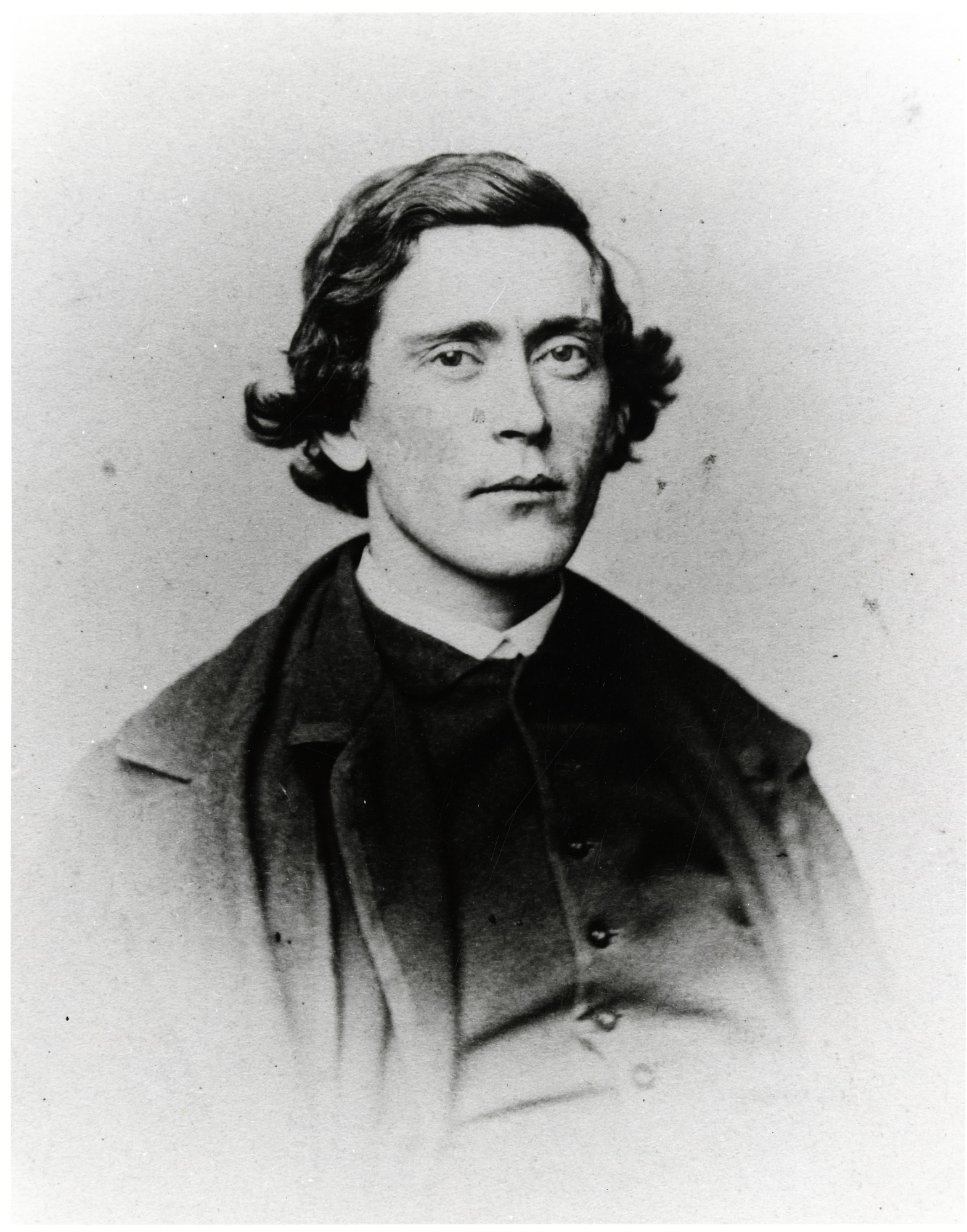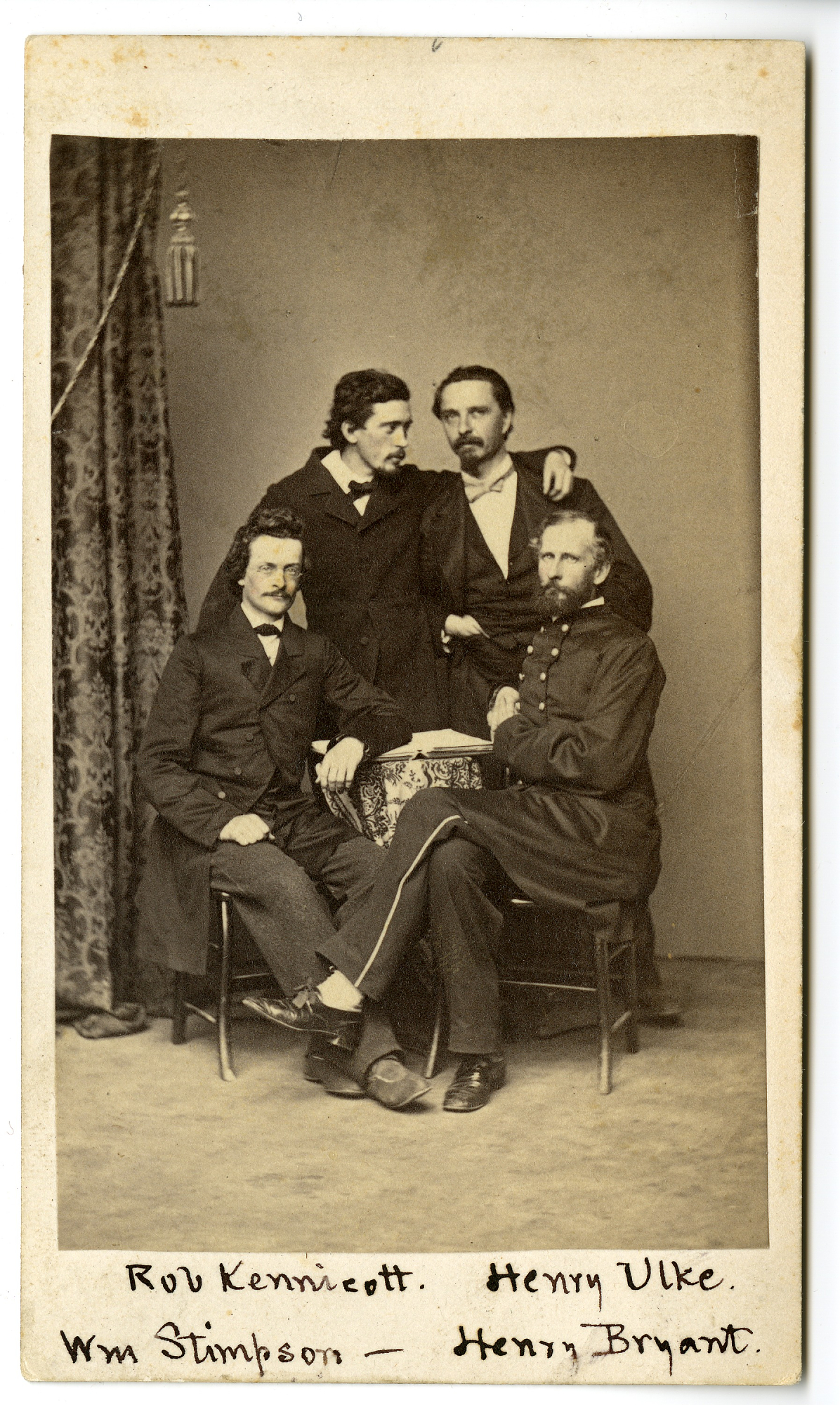Robert Kennicott

Throughout his young life, Kennicott dealt with poor health that at times made it difficult for him to participate in everyday events. Unfortunately, his ill-health followed him throughout his life and to his mysterious death in 1866.
In 1852-1853, Kennicott was sent to Cleveland, where he worked under the naturalist Dr. J. P. Kirtland, and then returned home in the summer of 1853 to start his own collection. All of Kennicott’s past experiences and tedious work led him to become part of multiple institutions and projects, such as his three-month trip to Southern Illinois in 1857 to collect for Northwestern University. Later in the year, Kennicott was initiated into the Megatherium Club, contributing much of his natural specimens and knowledge to the Smithsonian. On April 15, 1864 Kennicott wrote, “I have been appointed curator in share of the museum, so that henceforth I shall be in charge of a sort of ‘young Smithsonian.’”
Though Kennicott is often noted for his work in the scientific field, he should also be recognized for his compassion and fellowship with scientists and friends. In a letter dated February 17, 1863, Kennicott wrote a letter labeled “Folks at Home” describing the members of the Megatherium Club, revealing the impact these men had on him; “By knowing of these men you’ll get a better idea of my doings.”
He notes a long list of ‘official’ and visiting members, along with descriptions of their character, contributions made to the club and science, personal anecdotes, and physical characteristics. It is in this letter that outsiders understand the close and affectionate relationship of the members; Kennicott showcases their abilities and often notes many of them are “P.B.”s, “perfect bricks”. In a separate letter to Lucy Baird, daughter of Assistant Secretary Spencer Baird, Kennicott shows his closeness to not only the members themselves, but their families. In that letter, he asked about Lucy Baird’s well-being and inquired about her new found skill of piano-playing, “Don’t forget to learn some pretty music to play for me when I go back.”
As a collector and scientist, Kennicott’s life, like many other members of the Megatherium Club, was not just spent at the Castle but also on expeditions. In 1859, he took part in a three-year expedition to northern Canada and Alaska collecting specimen. To make this expedition possible, he was supported by both the Smithsonian and the Hudson’s Bay Company. In 1865, he traveled for the last time on the Western Union Telegraph Expedition.
Kennicott’s trip to Alaska ended mysteriously. On May 13, 1866, Kennicott’s body was found on the Yukon riverbank by a fellow member of the expedition. At the time, no one knew the exact cause of his passing, and rumors spread that he had committed suicide by swallowing strychnine. In a letter addressed to Assistant Secretary Spencer Baird, William H. Dall wrote of the expedition and Kennicott’s last day, “He [Kennicott] lay for a short-time and Ketchum who was in a half dosy, half awake, state; felt him reach up to his fire bag in which his revolver was put, hanging about his (Ks) head. K woke up presently and saw his revolver missing. He inquired for it and the Major handed it back to him.” This incident is one of the reasons why many thought that Kennicott committed suicide.
In addition, Kennicott himself wrote to Assistant Secretary Spencer Baird on June 4, 1865 about the expedition, “The following is a long statement of facts which I trust will never be worth the paper it is written upon. - Nevertheless I beg that you will keep it carefully - Should any thing happen to me ^[on this Exped so that I never return] it might be that some evil disposed person should by misrepresentations make it appear that I have not done my duty by the Company. - Col Bulkley is the executive officer of a big - very big - corporation. and he makes a good one. Should I die I fear he might not find it for the companys interests to take any special pains to make my true record clear - This because some of his subalterns are jealous of me. - I can take care of myself and my reputation while I'm alive.” Between the incident with Ketchum, and writing “Should I die,” Kennicott was creating a sulky image of himself, an image that was perceived suicidal.
After the men found Kennicott’s body on the Yukon riverbank, they carefully brought his body back to their home base, Kennicott’s body was sent to multiple locations before being moved in a metal coffin to The Grove in January 1867. After many years, forensic anthropologists from the National Museum of Natural History traveled to The Grove in order to conduct an autopsy of Kennicott.
Dr. Douglas Owsley, and other Smithsonian colleagues, concluded that Kennicott did not, in fact, commit suicide, but rather died of heart failure. As previously noted, Kennicott had ill-health since childhood, and an ongoing heart condition was likely the cause of death. Just six months before his death, he was seen having two fainting attacks, reaffirming his ill-health.
While some argue that the four toxic chemicals found in his system after his death—strychnine, arsenic, mercury, and lead—were proof of his suicide, forensic anthropologists, Doug Owsley and Kari Bruwelheide, and archivists worked together and dismissed this theory stating that the chemicals were at such low levels they could not have caused his death. In addition, his body was discovered in a stretched out position with his hands on his chest, further indicating heart failure.
Kennicott’s short life was undoubtedly filled with enough anecdotes, adventures, and scientific success to crown him one of the most notable members of the Megatherium Club. He was part of multiple expeditions, founding director of The Chicago Academy of Sciences, and an extremely devoted naturalist, contributing 151 lots of fish to the Smithsonian alone. To properly honor Kennicott, Darter, Etheostoma kennicotti, and the whitefish, Coregonus kennicotti Milner are named after him, as well as the town of Kennicott, Alaska.
Related Resources
- Biographical Memoir of Robert Kennicott: 1832-1872, J.W. Foster, Journal of the Illinois State Historical Society
- Folks at Home: February 17, 1863, Robert Kennicott, The Grove National Historic Landmark, Glenview, Illinois
- "Spencer Baird and Ichthyology at the Smithsonian: Robert Kennicott", National Museum of Natural History
- Celebrating 100 Years, Smithsonian Institution
Related Collections
- Spencer Fullerton Baird Papers, 1833-1889, RU 7002, Smithsonian Institution Archives
- Robert Kennicott Papers, 1863-1865, RU 7072, Smithsonian Institution Archives
- Western Union Telegraph Expedition Collection, 1865-1867, RU 7213, Smithsonian Institution Archives



